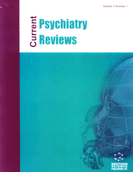Abstract
Catatonia has undergone many changes since it was first described by Kahlbaum in 1874 (“madness of rigidity”). Nowadays, we can distinguish many different ethiologies for this syndrome: Organic catatonia (the most common); affective (the next one); schizophrenic; and drug-induced. In recent reviews, there was no psychiatric disorder in 76% of cases of catatonia. The unitary pathophysiological conception of catatonia (“catatonic syndrome”) is supported by current research, including neurological causes, endocrine-metabolic, immunological, therapeutic and abuse drugs, psychiatric diseases, and others. Differential diagnosis is based on a complete somatic and psychopathological evaluation, and we must also play a biochemical and neuroimaging complementary tests´ battery. When an organic disorder is considered to be the ethiology, therapy should be targeted against this medical condition. If this is not feasible and/or catatonia persist or interferes with medical treatment, the elective therapeutic management should be benzodiazepines and Electroconvulsive Therapy (ECT). Memantine, aripiprazol, and other drugs have been also used with weak results.
Keywords: Catatonia. Organic-Psychiatry. Benzodiazepines. Electroconvulsive-Therapy (ECT), Endocrine-Metabolic, Neurological, Immune system, Therapeutic, Pathophysiology, Dopamine
 4
4



